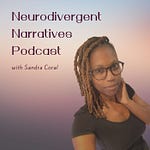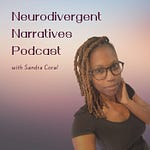A slight edit on this video (because I couldn’t be arsed to re-record the whole thing), is when I complained about people saying they were “demand avoidant”, but aren’t. What I meant was when they say they are pathological demand avoidant, but they aren’t. Demand avoidance is real, but pathological demand avoidance is something entirely different.
SC xo
Hey friends,
Chapter 4, which I called He never does anything you ask him to! or Dhruv’s story, was one of my favourite ones to write. But it was also the one that humbled me a whole hell of a lot because it turned into the last one I finished. (I say why in the video).
Dhruv’s story was a challenging ADHD story to tell because of the inclusion of co-occurring PDA alongside the unique experiences of biracial or multiracial students, cognitive inflexibility and a crash course in teaching with learner autonomy in mind.
There was a lot going on, but this 8-minute clip is a bite-sized part of it.
In it, I share a little about demand-free time, connecting it with the nervous system and the PDAers’ need for safety that is found through having complete autonomy.
I don’t think this chapter could have turned out the way it did without my editor’s PDA assistant and, most importantly, the experience and insights I got from the counselling I’ve done alongside my PDAers. Much like the students in my book, I think I learned more from you than you did from me. Thank you for trusting me to support you with your experiences.
To everyone else, I hope this video’s insights help in some small way or make you think a little differently.
I know that writing this chapter did both for me.
With love and gratitude,
SC xo
PS. I’m not super comfy being on video yet. At. All. I’m learning to step outside my comfort zone just a tiny bit here. The videos will normally be for my paid subscribers, but I thought I’d share one and see how I felt.
Let me know your experiences of PDA, demand avoidance or cognitive inflexibility and how you’re learning to manage it.








Share this post